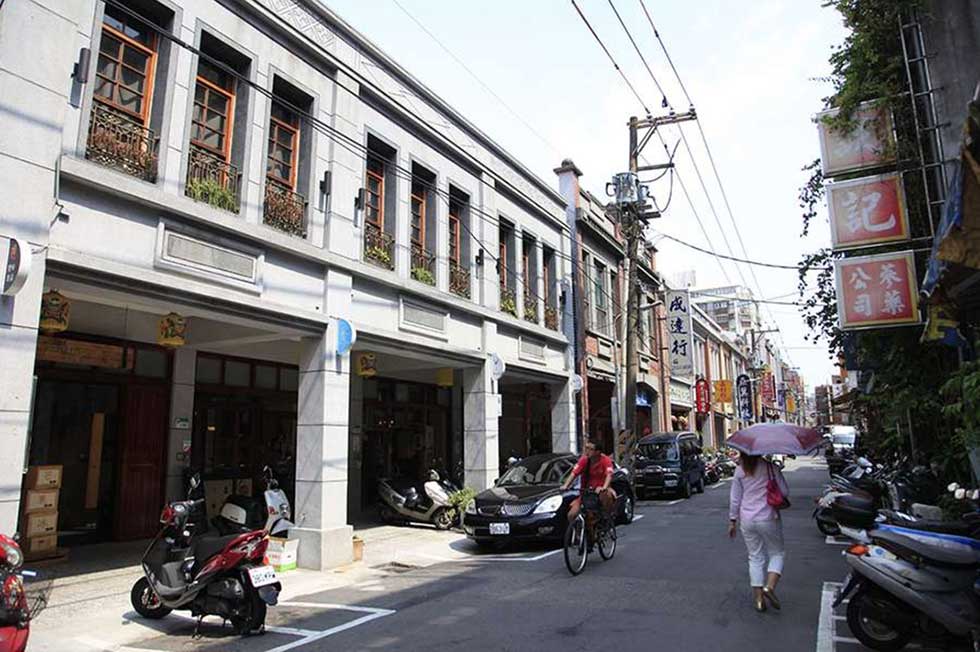
Taipei City is a metropolis teeming with life. Its fast-paced lifestyle demands that people move quickly through its avenues and streets. Inevitably, it’s easy to miss out on all the sights the city has to offer.
Palais de Chine invites its guests to slow down, close their eyes, and take a deep breath. Within the hotel’s chic baroque walls, history and art come alive, taking you on a fantastical journey that transcends both culture and time…
Palais de Chine Hotel has replaced bottled water with Reverse Osmosis Water in glass bottles and does not actively provide disposable supplies...etc. These adoption of sustainable practices let us participate in sustainable travel.
From 2019 till now, Palais de Chine Hotel and our guests has reduced
Location
Palais de Chine is located nearby Taipei Main Station, HSR, Taipei MRT, Taoyuan International Airport MRT, Taipei Transit Bus Station, and Taipei Public Bus Stops which make our hotel an accessible and extremely convenient place. The hotel is adjacent to Q Square, office building and Vieshow Cinemas to become the most prosperous and fashionable region of western Taipei.
Parking Information
Palais de Chine Hotel and Q square Shopping Mall share the parking lot. The entrance of the parking lot is located on Civic Blvd. Please proceed along Civic Blvd in the direction to Cheng-De Road, the entrance will be on the right hand side, 150 meters passed the Taipei Bus Station (Maximum clearance 2 meters.) All spaces onB4 and B5 floors are authorized for our guests.
By Public Transport
Please take Taipei Main Station Y5 exit and make a right turn to Cheng-De Road.Please take the West Exit on the first floor of Taipei Main Station, walk along the west plaza and cross the bridge through Civic Boulevard.

In 1997 members of the Golden Bough Theatre made a startling discovery. There, deep in the heart of Taipei and cordoned off from all visitors, stood an abandoned factory. The group described the factory as a city within a city, a place where nature was left to age with concrete for nearly a decade…and they were intrigued.

Dadaocheng was originally settled by Pingpu people that migrated there after a fierce fight with settlers in Mengjia (current day Wanhua District) from Tongan in Fujian Province. Over the years, Dadaocheng developed with shops and homes rising up along the Tamsui River. After Tamsui Port opened, Dadaocheng became the main entrepot in Taipei under the administration of Liu Ming-chuan. Yanping North Road and Guide Street were at the center of commercial activity in the district, and tea and cloth were the main items traded during this colorful and memorable time of years past in Dadaocheng.

Dadaocheng was originally settled by Pingpu people that migrated there after a fierce fight with settlers in Mengjia (current day Wanhua District) from Tongan in Fujian Province. Over the years, Dadaocheng developed with shops and homes rising up along the Tamsui River. After Tamsui Port opened, Dadaocheng became the main entrepot in Taipei under the administration of Liu Ming-chuan. Yanping North Road and Guide Street were at the center of commercial activity in the district, and tea and cloth were the main items traded during this colorful and memorable time of years past in Dadaocheng.

In 1997 members of the Golden Bough Theatre made a startling discovery. There, deep in the heart of Taipei and cordoned off from all visitors, stood an abandoned factory. The group described the factory as a city within a city, a place where nature was left to age with concrete for nearly a decade…and they were intrigued.

Dadaocheng was originally settled by Pingpu people that migrated there after a fierce fight with settlers in Mengjia (current day Wanhua District) from Tongan in Fujian Province. Over the years, Dadaocheng developed with shops and homes rising up along the Tamsui River. After Tamsui Port opened, Dadaocheng became the main entrepot in Taipei under the administration of Liu Ming-chuan. Yanping North Road and Guide Street were at the center of commercial activity in the district, and tea and cloth were the main items traded during this colorful and memorable time of years past in Dadaocheng.

Dadaocheng was originally settled by Pingpu people that migrated there after a fierce fight with settlers in Mengjia (current day Wanhua District) from Tongan in Fujian Province. Over the years, Dadaocheng developed with shops and homes rising up along the Tamsui River. After Tamsui Port opened, Dadaocheng became the main entrepot in Taipei under the administration of Liu Ming-chuan. Yanping North Road and Guide Street were at the center of commercial activity in the district, and tea and cloth were the main items traded during this colorful and memorable time of years past in Dadaocheng.